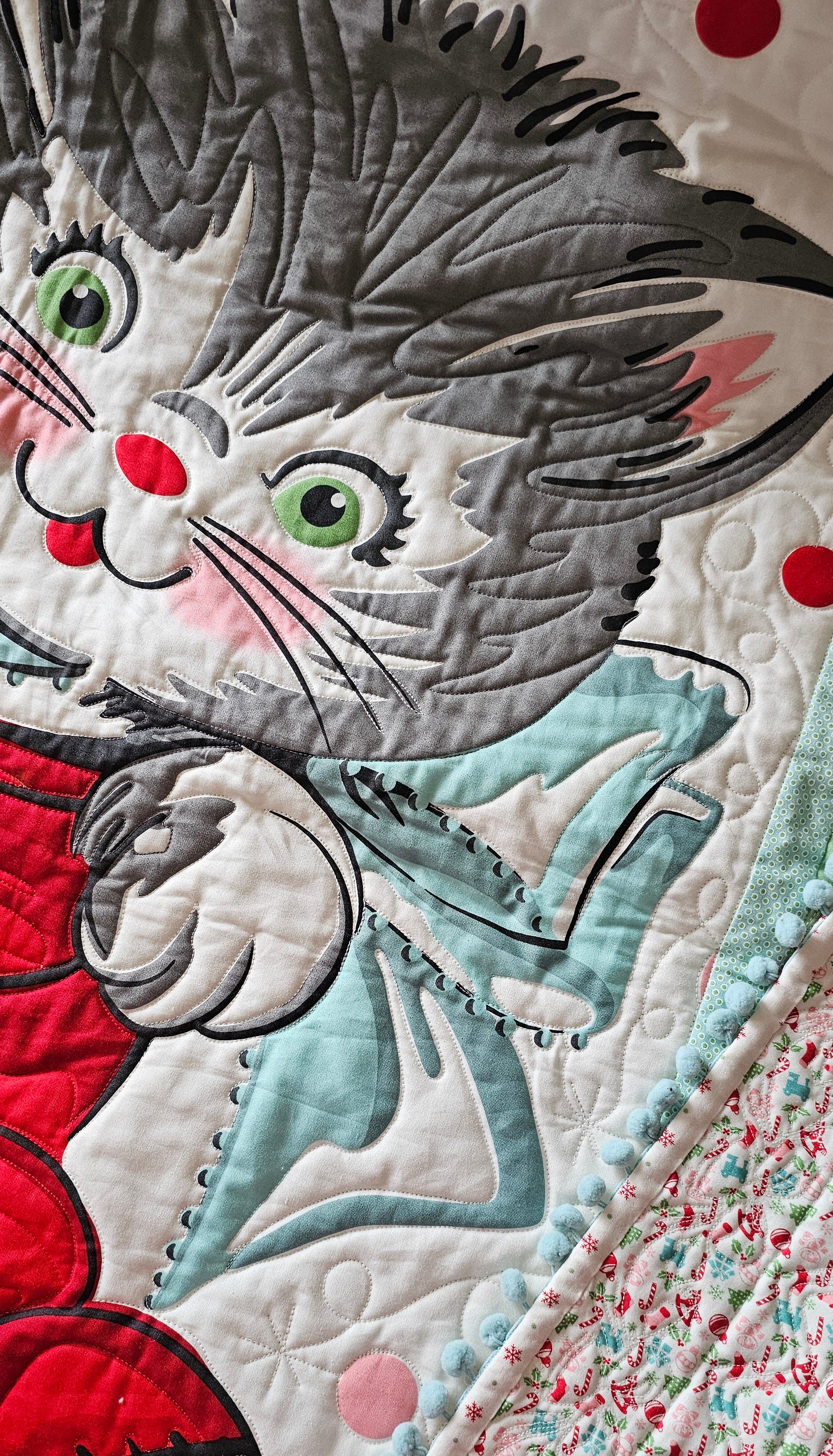Adding Pompom Trim to Quilt Binding

For years, I've loved finding vintage linens and apparel accessories where little pom-poms were trimmed along the edges. It's whimsical, nostalgic and sweet! So, when this Kitty Christmas panel came to the shop and the illustration included a pom-pom ribbon tied around the kitten's neck, I knew I wanted to feature that by accenting the quilt with real pompom trim along the edge.

This technique breaks from sewing traditional binding, yet adding pom-pom bauble trim instead has always daunted me. I could never quite figure out how to do it properly while still maintaining a quality finish and seam alignment without adding too much bulk to the edge.
However, after reading this blog, it took me a little while to work up the courage (okay, a long while—over a year!), and to start the process and transfer my sewing steps to the Singer Featherweight so as to successfully bind a quilt with little pompoms. To my surprise, it honestly was not that hard to do at all! And I'm actually inspired to do it again!
If you would like take your quilt binding to the next level, feel free to follow Suzy's blog link above and then follow along with the photos and my brief commentary below to help you add some tactile flair to your quilt edge using your own Singer Featherweight.
NECESSARY TOOLS (These are what I used to do this process on a Singer Featherweight.)
- Pom-Pom / Baubles Trim of your choice
- Cutting Mat and Cutting Ruler
-
Narrow Zipper Foot Attachment
(either a vintage original attachment or replica foot will work perfectly) - Wonder Clips or Sewing Clips of choice
-
Karen Kay Buckley Scissors (because they are so incredibly sharp at the point!)


- Measure Width of Trim (WOT). There is the actual pom-pom baubles and then there is the flat woven stabilizing tape. Typically, pompom trim is measured as a whole, but for this tutorial, we will only be using the measurement of the flat stabilizer tape. Mine measures 1/4" wide, but there is a formula below, so you can accommodate any pompom trim width.
-
Multiply WOT x 4 and add 1/2". For example, my trim measures 1/4," so I will need to cut my backing strips to be 1 1/2" wide.
-
Measure and add together all four sides of quilt, then add 12." Divide that number by 40." 42"-44" is typically the width of fabric (WOF) measurement, but dividing by 40" will give assurance that you will have enough with varying selvedge widths and print designs. The result of this dividing quilt math will be the number of backing strips you will need to cut from the full width of fabric. The Kitty Christmas quilt measures 60" x 68". The perimeter measurement of all four sides is 256." Thus, 256" / 40" = 6.4. Therefore, I will need to cut 7 strips, each 1 1/2" wide.
- Join the backing strips together with diagonal seams. Trim and press open.
-




Fold and press the beginning end over 1/4" and then press the backing strip in half lengthwise, pressing the full yardage length. This end will be what you use to overlap and tuck the opposite end into when joining the ends together on your quilt.

The pom-pom trim will begin being basted just below the starting folded edge.






Reminder: You are clipping the backing strips to the right side of the quilt edge because once it's sewn, it will get turned and hand stitched to the back side of the quilt.

















